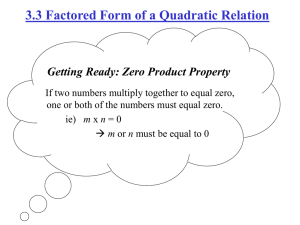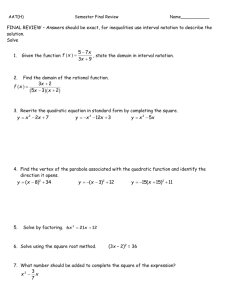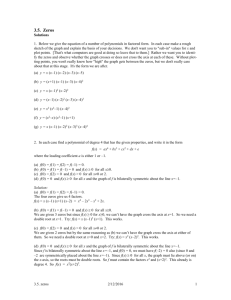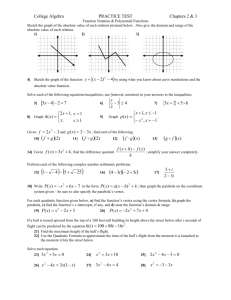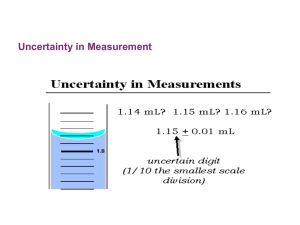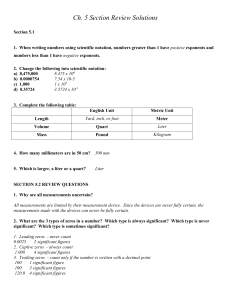Zeros of Polynomial Functions
advertisement
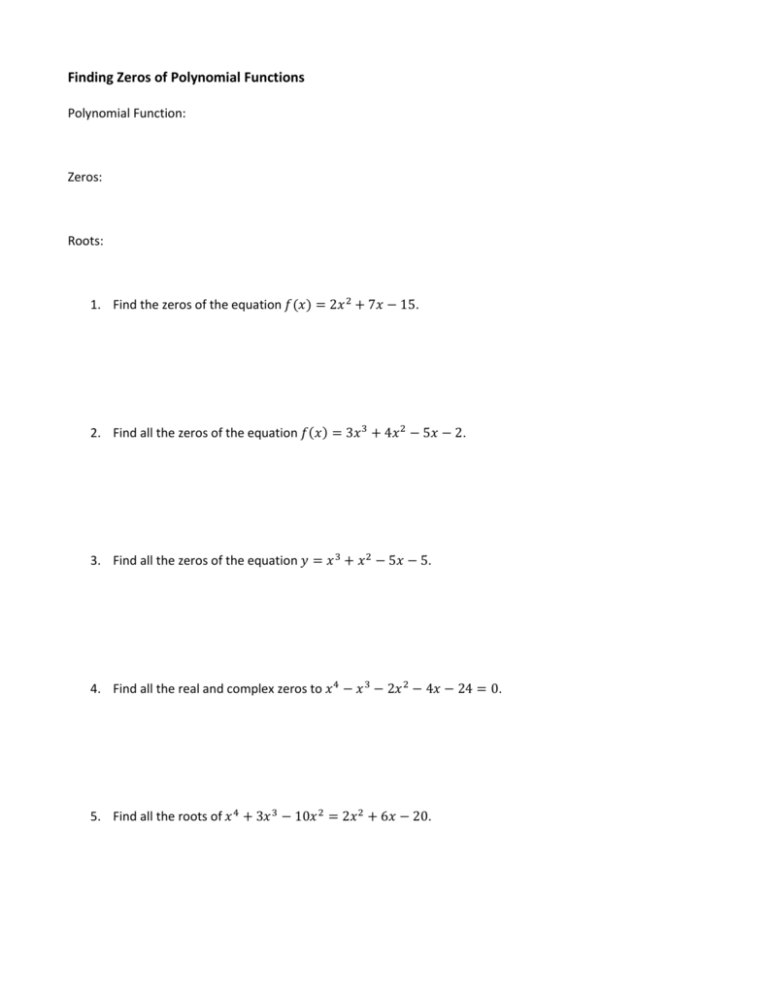
Finding Zeros of Polynomial Functions Polynomial Function: Zeros: Roots: 1. Find the zeros of the equation 𝑓(𝑥) = 2𝑥 2 + 7𝑥 − 15. 2. Find all the zeros of the equation 𝑓(𝑥) = 3𝑥 3 + 4𝑥 2 − 5𝑥 − 2. 3. Find all the zeros of the equation 𝑦 = 𝑥 3 + 𝑥 2 − 5𝑥 − 5. 4. Find all the real and complex zeros to 𝑥 4 − 𝑥 3 − 2𝑥 2 − 4𝑥 − 24 = 0. 5. Find all the roots of 𝑥 4 + 3𝑥 3 − 10𝑥 2 = 2𝑥 2 + 6𝑥 − 20. Practice: 1. A line joining (0,10) and (5,0) and an inscribed rectangle are shown. Find the coordinates (𝑥, 𝑦) which maximizes the area of the rectangle. 4 2. Find the equation of the vertical parabola with focus at (0,4), opening upward, and containing the point (12,4). (x,y) 2 5 10 3. Find the equation for the quadratic function 𝑓, where 𝑓(−1) = 𝑓(−2) = 0 and 𝑓(0) = −4. 4. If 𝑓(𝑥) = |𝑥| + 1 and 𝑔(𝑥) = |𝑥| − 3, find the zeros of g f . 5. Solve: 6. Working together, Robin and Lee can paint a house in 4 days. Robin works twice as fast as Lee. How long would it take each person working alone to paint the house? 3 2 ≥ 𝑥+2 𝑥−4 Name: CAH – 1/9/13: Finding Zeros 1. Find the equation of the vertical parabola that contains the points (−6,0), (0,3), and (8,0). 2. If 𝑓 is a real valued function, find the sum of all the distinct positive integers in the domain of 𝑓 if 𝑓(𝑥) = √6 − 𝑥. 3. Find the minimum value of the function 𝑓(𝑥) = (𝑥 − 1)2 + 3 4. Solve: 5. Write an equation of the vertical parabola that contains the points (−1,2) with focus (3, −1), and which opens downward. 6. The arithmetic sequence with initial terms 60 and 180 has 48 terms. What is the 48th term? 7. Find the equation of the circle with center (2,1) and tangent to the line 𝑥 − 3𝑦 = 9. 8. Solve: 4 − +3>0 𝑥 2𝑥 + 2𝑥+1 = 96 9. Find the equation of the parabola with focus (−2, 1) and directrix 𝑥 = 6. 10. For what values of 𝑐 will the polynomial 𝑥 3 + 3𝑥 2 + 𝑐𝑥 − 6 have a zero at 𝑥 = 1? 11. Find the zeros of the equation: 𝑓(𝑥) = 2𝑥 3 + 9𝑥 2 − 20𝑥 − 75. 12. Simplify: 13. Find the equation of the parabola which is symmetrical to the 𝑦-axis and passes through the points (0, −2) and (2,0). 14. Let 𝑓(𝑥) = 𝑥 2 − 4𝑥 − 21. Find the values of 𝑥 such that 𝑓(|𝑥| − 8) = 0. 15. Solve: 16. Find the axis of symmetry and the range for the quadratic function 𝑓(𝑥) = −3𝑥 2 − 6𝑥 + 8. 2𝑥 ≥ 16√2 6 (16𝑥)1/2 (𝑥 −2/3 ) 𝑥 3/2


